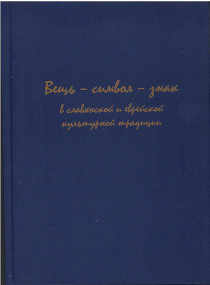A Thing – and a Symbol: Plot’s Migration and Transformation
DOI:
https://doi.org/10.31168/2658-3356.2019.9Keywords:
Hasidic history, I. Erenburg, P. Markish, A. GalichAbstract
The article discusses the transformation of a thing (pipe) into a symbol, the translation of this motive, its reception and metamorphoses of meaning. In the cycle of Hasidic stories associated with the Baal Shem Tov (Besht), there is a whistle-pipe motive, played by an unconscious boy, as if violating the holiness of the holiday Yom Kippur, but receiving approval from Besht and the “smile of God.” Erenburg includes this story in the significant ending of his novel “The Stormy Life of Lazik Roitschwanets” (1927) about the unlucky but “holy” simpleton. In the understanding of Peretz Markish, a pipe from this story is a general symbol of art, for Alexander Galich, it becomes a symbol of salvation, and for the bards of the 1960s – the resistance of art.












